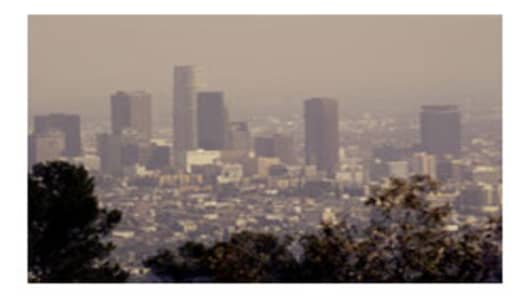So--what if everything you were told about air pollution was wrong? That it's not a problem anywhere near what most people believe. Joel Schwartz thinks that way. He is an adjunct scholar at the National Center for Policy Analysis. He's out with a study that says environmentalists have exaggerated just how bad air pollution is. But not so fast--says Ed Hopkins. He's Director of the Environmental Quality Program at the Sierra Club. Both appeared on "Street Signs" with Erin Burnett to debate the issue.
Schwartz makes the point that over the last 25 years--air pollution has gone down--even with doubled the miles driven in the U.S. He says suit levels are down 40%-- as are carbon monoxide levels--down 74%. He says most Americans believe air pollution is problem--where none really exists.
Hopkins agrees on the levels Schwartz cited--but says that's because of the Clean Air Act updates of 1970 (several revised versions of the act have been passed into U.S. law over the years). He says without that--levels would be way up. Sure--progress has been made says Hopkins, but some 150 million Americans live where the air is not safe to breathe. He says we need to do more to bring the levels down even farther.
Burnett asked about a recent interview she conducted with the Paul Anderson-- CEO of Duke Energy --where Anderson cited the need for more government regulation of pollution. Schwartz replied--the Clean Air Act caused more harm than good.
When asked which danger is greater--air pollution or carbon dioxide emissions--Hopkins said "both." He says the U.S. is the biggest emitter of CO2 in the world.
The last sentence was from Burnett. She noted that the polar bear has been added to the list of endangered species this week by the U.S.--because of global warming.



